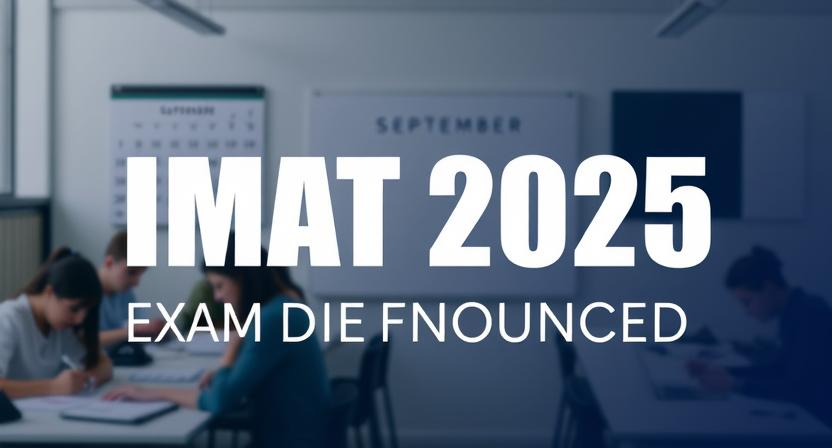
1. Introduction
Before you start preparing, knowing whether you qualify for the exam is important. Understanding the eligibility criteria for IMAT can save you time, effort, and disappointment. In this guide, we’ll break down who can take the IMAT, the academic requirements, and other key factors to consider.
If you dream of studying medicine in Italy, you’ve probably heard about the IMAT (International Medical Admissions Test). It is an entrance exam required for admission to English-taught medical programs in Italian universities. The test evaluates your knowledge in logical reasoning, biology, chemistry, physics, math, and general knowledge.
2. Who Can be Eligible for the IMAT Exam?
General Eligibility Criteria
The IMAT exam is open to Italian and international students wanting to study medicine in Italy. It is designed for students applying to English-taught MD (Medicine and Surgery) programs at public universities in Italy. To be eligible, you must:
- Have a high school diploma or equivalent
- Meet the subject requirements for university admission
- Apply through the official IMAT registration process

The exam is not limited by nationality, meaning students from any country can take it as long as they meet the requirements.
Age Requirements
There is no official age limit for taking the IMAT. However, you must have completed high school or be in your final year of studies at the time of application. Most students taking the IMAT are 17-19 years old, but older students (such as those taking a gap year or switching careers) can also apply.
3. Educational Requirements
High School Diploma or Equivalent
To take the IMAT, you must have a high school diploma or an equivalent qualification that allows you to enter a university in your home country. This means:
- If you studied in the EU, your diploma must be recognized by Italian universities.
- If you studied outside the EU, you may need to provide extra documents to prove that your diploma is valid for university admission.
- Some countries may require students to complete at least 12 years of education before applying. If you’re in your final year of high school, you can still apply for IMAT, but you must complete your diploma before enrolling in university.

Specific Subjects Needed
There are no strict subject requirements, but since the IMAT covers biology, chemistry, physics, and math, it’s important to have studied these subjects in high school. Students from IB, A-Levels, AP, or other international curricula should check if their qualifications meet Italian university admission rules.
If your school system does not include science subjects, you might need to take additional exams or certifications to prove your knowledge.
4. International Students & IMAT
Can Students from Any Country Apply?
Yes! The IMAT exam is open to students from any country. As long as you meet the educational requirements, you can apply and compete for a spot in an English-taught medical program in Italy. Many students from Europe, Asia, Africa, and the Americas take the IMAT every year. However, international students must carefully check:
- Whether their high school diploma is recognized in Italy
- If they need to submit extra documents for verification
- The visa requirements for studying in Italy (for non-EU students)

Differences for EU vs. Non-EU Students
The biggest difference between EU and non-EU students is in the application process and seat allocation:
EU Students:
- Compete for EU seats, which are usually more in number.
- Can apply directly through the Italian university system without needing a student visa.
Non-EU Students:
- Compete for non-EU seats, which are fewer in number.
- Must apply through the Italian embassy or consulate in their home country.
- Need a student visa if accepted.
Because of the limited seats for non-EU students, competition is often tougher for them. That’s why preparing well and aiming for a high IMAT score is important!
5. Language Requirements
Is English Proficiency Required?
Yes, since the IMAT and the medical courses in Italy are entirely in English, you need to understand the language well. However, you do NOT need to take an English language test (like IELTS or TOEFL) to sit for the IMAT. The test itself assesses your reading and comprehension skills through general knowledge and critical thinking questions. So, if you can understand and answer IMAT questions, your English level is likely good enough for the course.

Do You Need IELTS or TOEFL?
For most universities, IELTS or TOEFL is NOT required if you are from an English-speaking country or have studied in English before. However, some universities may ask for proof of English proficiency after admission, especially for non-native speakers.
You can check this by:
- Looking at the admission requirements on your chosen university’s website
- Contacting the university’s admission office for confirmation
In general, if you can understand IMAT study materials, you shouldn’t have any language issues. But practicing English comprehension can still be helpful for the exam!
6. How Many Times Can You Take the IMAT?
Can You Attempt It Multiple Times?
Yes! There is no official limit on how many times you can take the IMAT. If you don’t get accepted in one year, you can try again the next year. Many students retake the exam to improve their scores and increase their chances of getting into medical school. However, keep in mind:
- The IMAT is held only once per year, so if you miss it or don’t pass, you must wait until the next year.
- Each attempt requires a new registration and payment of the exam fee.
- Some students improve their scores by preparing better and learning from their mistakes in previous attempts.

What Happens If You Fail?
Failing the IMAT doesn’t mean the end of your medical journey. If you don’t score high enough to get a seat, here’s what you can do:
- Retake the IMAT next year with better preparation.
- Apply to private medical universities in Italy, which have different entrance exams.
- Study medicine in another country with similar English-taught programs.
- Take a gap year to strengthen your science and reasoning skills before trying again.
Many students don’t pass on their first attempt, but with dedication and practice, they succeed the next time!
7. IMAT for Transfer Students
Can Medical Students from Other Universities Apply?
Yes, medical students from other universities can apply for the IMAT if they want to transfer to an English-taught medical program in Italy. If you’re already studying medicine at another university, you may be able to join a medical school in Italy at a later stage of your education. However, it’s important to note that transfer opportunities are limited and highly competitive.

What Are the Conditions?
If you’re a transfer student, here are the key conditions you need to be aware of:
- IMAT Exam Requirement
- Even if you are already studying medicine, you still need to take and pass the IMAT exam to apply for an Italian medical program.
- The IMAT score determines whether you will be accepted into the university, even if you have prior medical education.
- Even if you are already studying medicine, you still need to take and pass the IMAT exam to apply for an Italian medical program.
- Transfer Credits and Year of Admission
- After passing the IMAT, you may not start at the same year level you were in at your previous university. Universities in Italy will evaluate your previous courses and decide which credits can be transferred.
- This means you could potentially be placed in the first or second year, depending on what you’ve studied and the university’s credit transfer system.
- After passing the IMAT, you may not start at the same year level you were in at your previous university. Universities in Italy will evaluate your previous courses and decide which credits can be transferred.
- Availability of Seats
- Transfer opportunities are limited and subject to availability. The number of transfer students that each university accepts varies, and there may be a cap on how many transfer students they can admit.
- Transfer opportunities are limited and subject to availability. The number of transfer students that each university accepts varies, and there may be a cap on how many transfer students they can admit.
- Language and Documentation
- You will need to provide official transcripts from your previous university to prove your academic progress.
- Some universities may require you to demonstrate your proficiency in English, especially if your previous courses were not in English.
- You will need to provide official transcripts from your previous university to prove your academic progress.
- Additional Requirements
- Some universities may have additional specific requirements for transfer students, such as interviews or supplementary exams. Always check the university’s official transfer policies to confirm these conditions.
- Some universities may have additional specific requirements for transfer students, such as interviews or supplementary exams. Always check the university’s official transfer policies to confirm these conditions.
If you’re considering transferring, it’s a good idea to contact the universities directly to understand their specific transfer policies and deadlines.
8. Other Special Cases
Gap Year Students
If you’ve taken a gap year after high school, you can still apply for the IMAT! Taking a year off to travel, work, or focus on other activities won’t affect your eligibility to take the exam. Many students use this time to improve their study habits, strengthen their knowledge in relevant subjects, or even gain practical experience in healthcare, which can be beneficial for their IMAT preparation.
Just keep in mind:
- You need to have completed high school (or an equivalent education) before applying.
- If you’re applying after a gap year, make sure to plan, as there are limited seats available, and competition can be tough.
A gap year can be a great opportunity to recharge, reflect, and make sure you’re fully prepared for the challenges ahead.
Students with Different Education Systems (IB, A-Levels, etc.)
If you’ve completed high school through a different education system, such as the International Baccalaureate (IB), A-Levels, or another curriculum, you can still apply for the IMAT. Many international students with these qualifications successfully take the exam and enroll in Italian medical universities. That being said, there are several factors to remember:
- Recognition of Your Diploma
- IB and A-level students usually meet the educational requirements for the IMAT. However, you may need to provide your diploma and transcripts for verification, especially if your high school was in a different country.
- Universities in Italy may require you to prove that your qualification is equivalent to the Italian secondary school diploma.
- IB and A-level students usually meet the educational requirements for the IMAT. However, you may need to provide your diploma and transcripts for verification, especially if your high school was in a different country.
- Specific Subject Requirements
- In some cases, students from different education systems may not have completed the same subjects that are required for the IMAT (such as specific science courses).
- If you’re missing any key subjects, you might be required to take additional courses or exams to meet the entry requirements for medical school.
- In some cases, students from different education systems may not have completed the same subjects that are required for the IMAT (such as specific science courses).
- Pre-IMAT Requirements
- Some international students from non-standard education systems (like IB or A-Levels) may be required to take additional qualification exams before they can register for the IMAT. Make sure to check the university’s guidelines for specific details.
- Some international students from non-standard education systems (like IB or A-Levels) may be required to take additional qualification exams before they can register for the IMAT. Make sure to check the university’s guidelines for specific details.
- Language of Instruction
- For students with different qualifications, if your previous education wasn’t in English, you might still need to demonstrate proficiency in the English language by providing proof of your education in English or taking tests like IELTS or TOEFL (if required).
- For students with different qualifications, if your previous education wasn’t in English, you might still need to demonstrate proficiency in the English language by providing proof of your education in English or taking tests like IELTS or TOEFL (if required).
It’s essential to verify the specific requirements of the Italian university you’re applying to, as these can vary. Contact the admissions office for guidance to ensure that your qualifications meet the standards.

How to Check Your Eligibility?
Official Resources to Verify Requirements
To ensure you’re fully eligible for the IMAT exam, it’s important to rely on official and up-to-date sources. Here are the primary places where you can find eligibility details and other important information:
- University Websites
- Each Italian university offering English-taught medical programs may have slightly different eligibility requirements. Check the admissions page of the university you are interested in to see specific guidelines for international and domestic students.
- Look for information about education requirements, language proficiency, registration deadlines, and more.
- Each Italian university offering English-taught medical programs may have slightly different eligibility requirements. Check the admissions page of the university you are interested in to see specific guidelines for international and domestic students.
- Italian Ministry of Education, Universities, and Research (MIUR)
- The MIUR website provides general guidelines and official notices regarding university admissions in Italy. This is an important source for any updates or official changes in the admissions process for IMAT.
- MIUR also provides detailed information about recognized qualifications from other countries and their equivalency to the Italian high school diploma.
- The MIUR website provides general guidelines and official notices regarding university admissions in Italy. This is an important source for any updates or official changes in the admissions process for IMAT.
- Cambridge Assessment Admissions Testing (CAAT)
- The official IMAT website hosted by Cambridge Assessment provides all the important details about registration, exam format, dates, and more. It’s the best place to verify the exam structure and important registration instructions.
- Make sure to read the FAQs section to get clarity on common eligibility questions.
- The official IMAT website hosted by Cambridge Assessment provides all the important details about registration, exam format, dates, and more. It’s the best place to verify the exam structure and important registration instructions.
- University Student Portals
- Many universities have student portals that offer helpful resources, including eligibility checkers or guides for international applicants. These portals are often updated and offer tailored information for students from different countries.
- Many universities have student portals that offer helpful resources, including eligibility checkers or guides for international applicants. These portals are often updated and offer tailored information for students from different countries.
Who to Contact for Clarification
If you’re still unsure about your eligibility or need help with specific details, here’s who you can reach out to:
- University Admissions Offices
- The admissions office at the university you plan to apply to is your first point of contact for any eligibility questions. They can clarify whether your educational background is sufficient and provide additional information about documents, applications, or any special conditions.
- Many universities have dedicated international student offices that can guide you through the process if you’re applying from abroad.
- The admissions office at the university you plan to apply to is your first point of contact for any eligibility questions. They can clarify whether your educational background is sufficient and provide additional information about documents, applications, or any special conditions.
- Italian Embassies or Consulates
- If you’re a non-EU student, you should also reach out to the Italian embassy or consulate in your home country. They can help you with any visa requirements and clarify any eligibility questions specific to your nationality.
- They can also provide information about Italian language requirements if your previous education wasn’t in English.
- If you’re a non-EU student, you should also reach out to the Italian embassy or consulate in your home country. They can help you with any visa requirements and clarify any eligibility questions specific to your nationality.
- IMAT Helpdesk
- If you have any questions specifically related to the IMAT exam itself, you can contact the IMAT helpdesk provided by Cambridge Assessment. They can answer questions about exam dates, registration processes, and more.
- They are also great at answering technical questions related to online registration.
- If you have any questions specifically related to the IMAT exam itself, you can contact the IMAT helpdesk provided by Cambridge Assessment. They can answer questions about exam dates, registration processes, and more.
By using these official resources and contacting the appropriate offices, you can ensure that you meet all eligibility requirements for the IMAT exam and are fully prepared to apply!
Final Thoughts
Encouragement for Eligible Students
If you’re eligible to take the IMAT, that’s the first big step toward your dream of studying medicine in Italy! The IMAT is a challenging exam, but don’t let that discourage you. Thousands of students from around the world take the test each year, and many of them succeed by staying focused, dedicated, and organized in their preparation. Remember, whether you’re applying directly after high school, taking a gap year, or transferring from another university, you’re capable of achieving your goal. The key is to stay determined, keep improving, and never give up on your dream of becoming a doctor.

Importance of Preparing Early
One of the most important pieces of advice I can give is to start preparing early. The IMAT exam covers a lot of material, and it’s not just about memorization; it requires you to think critically and apply your knowledge in various ways. Starting your preparation months in advance will give you enough time to:
- Build a solid foundation in subjects like biology, chemistry, physics, and logical reasoning.
- Practice with mock exams to get a feel for the test format and time limits.
- Identify your weaknesses and focus on improving them before the exam day.
Early preparation will help you stay calm and confident when exam day arrives. You’ll also have the flexibility to adjust your study schedule as needed and avoid unnecessary stress.
If you’re committed to your goal and ready to start preparing, you’re already on the right track. Keep moving forward with confidence—you’ve got this!
Good luck with your IMAT journey, and remember, the path to medical school starts with believing in yourself and taking the first step. Stay motivated, plan ahead, and success will follow!


